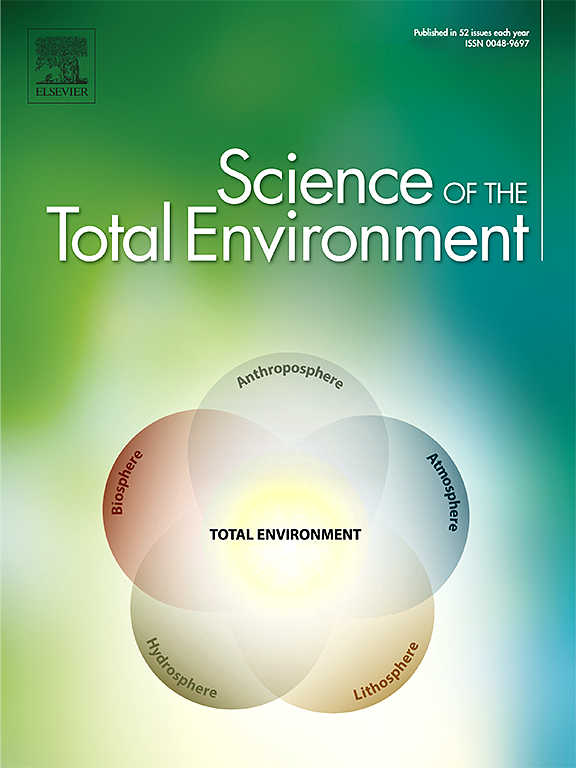Molecular dynamics and factors governing recalcitrance of dissolved organic matter: Insights from laboratory incubation and ultra-high resolution mass spectrometry
IF 8.2
1区 环境科学与生态学
Q1 ENVIRONMENTAL SCIENCES
引用次数: 0
Abstract
The oceanic dissolved organic matter (DOM) reservoir is one of Earth's largest carbon pools, yet the factors contributing to its recalcitrance and persistence remain poorly understood. Here, we employed ultra-high resolution mass spectrometry (UHRMS) to examine the molecular dynamics of DOM from terrestrial, marine and mixed sources during bio-incubation over weekly, monthly, and one year time spans. Using Fourier transform ion cyclotron resonance mass spectrometry (FT-ICR MS), we classified DOM into three distinct categories (Consumed, Resistant and Product) based on their presence or absence at the start and end of the incubation. Our results show that molecular properties, such as hydrogen to carbon ratio (H/C), modified aromaticity index (AImod), and nominal oxidation state of carbon (NOSC), strongly influence DOM lability and its biogeochemical cycling. Interestingly, Product formulas identified in the short-term incubations were often reclassified as Consumed formulas in longer-term incubations, underscoring the importance of incubation time in determining the persistence of DOM formulas. Further, we introduced a Change Ratio (CR) to identify formulas with significantly altered relative abundances. The molecular characteristics of these Increase or Decrease formulas exhibited notable differences, reinforcing their role in determining lability. In seawater samples, Decrease formulas were more abundant than Increase formulas, supporting the dilution hypothesis, which suggests low concentrations contribute to biological recalcitrance. However, the instability of relative abundance differences between Increase and Decrease formulas when CR thresholds were altered, coupled with the robustness of AImod differences, highlights the dominance of molecular properties over concentration in determining DOM lability. Furthermore, the AImod distribution of these Increase and Decrease formulas mirrored deep-enriched and surface-enriched formulas in the open ocean, validating our incubation results with field investigations. Overall, our study demonstrates that combining laboratory incubation with UHRMS advances our molecular-level understanding of DOM recalcitrance and thus global carbon cycling.

求助全文
约1分钟内获得全文
求助全文
来源期刊

Science of the Total Environment
环境科学-环境科学
CiteScore
17.60
自引率
10.20%
发文量
8726
审稿时长
2.4 months
期刊介绍:
The Science of the Total Environment is an international journal dedicated to scientific research on the environment and its interaction with humanity. It covers a wide range of disciplines and seeks to publish innovative, hypothesis-driven, and impactful research that explores the entire environment, including the atmosphere, lithosphere, hydrosphere, biosphere, and anthroposphere.
The journal's updated Aims & Scope emphasizes the importance of interdisciplinary environmental research with broad impact. Priority is given to studies that advance fundamental understanding and explore the interconnectedness of multiple environmental spheres. Field studies are preferred, while laboratory experiments must demonstrate significant methodological advancements or mechanistic insights with direct relevance to the environment.
 求助内容:
求助内容: 应助结果提醒方式:
应助结果提醒方式:


